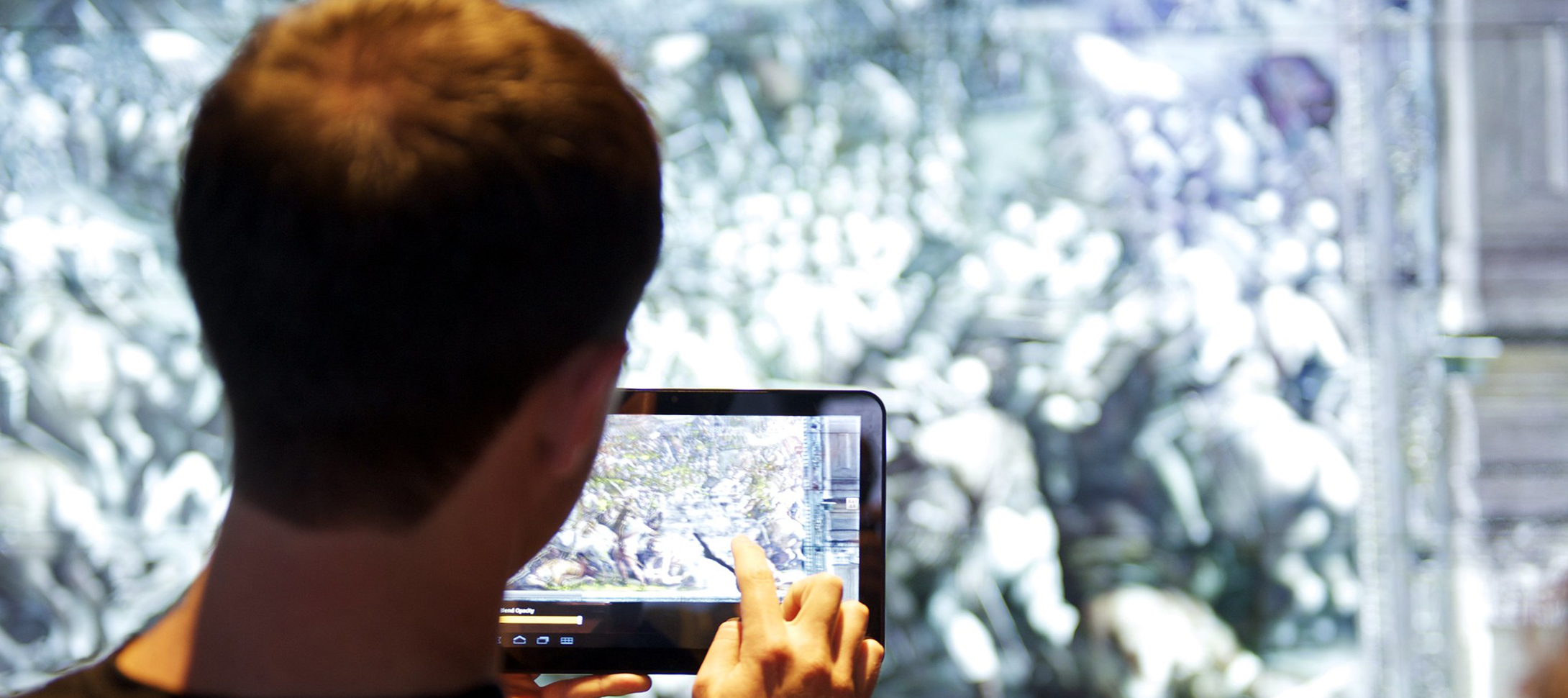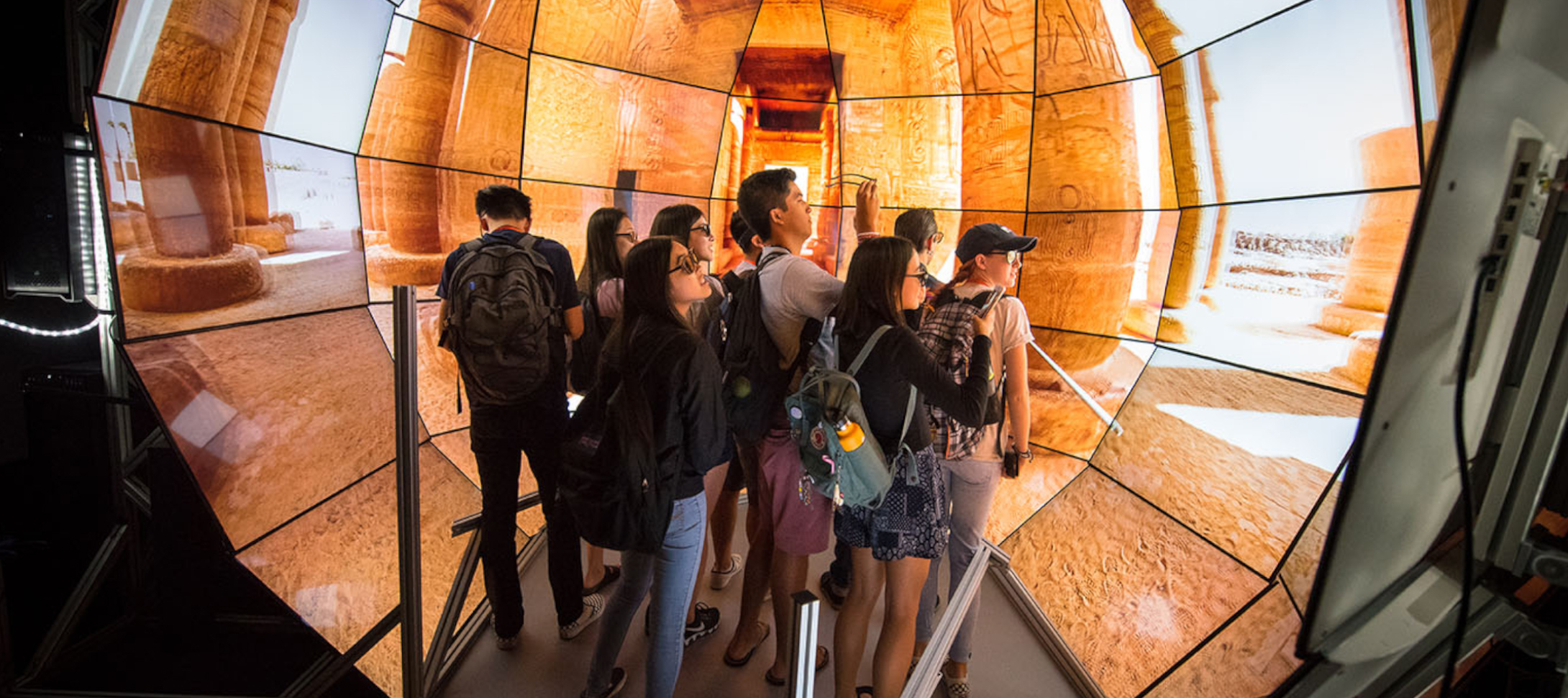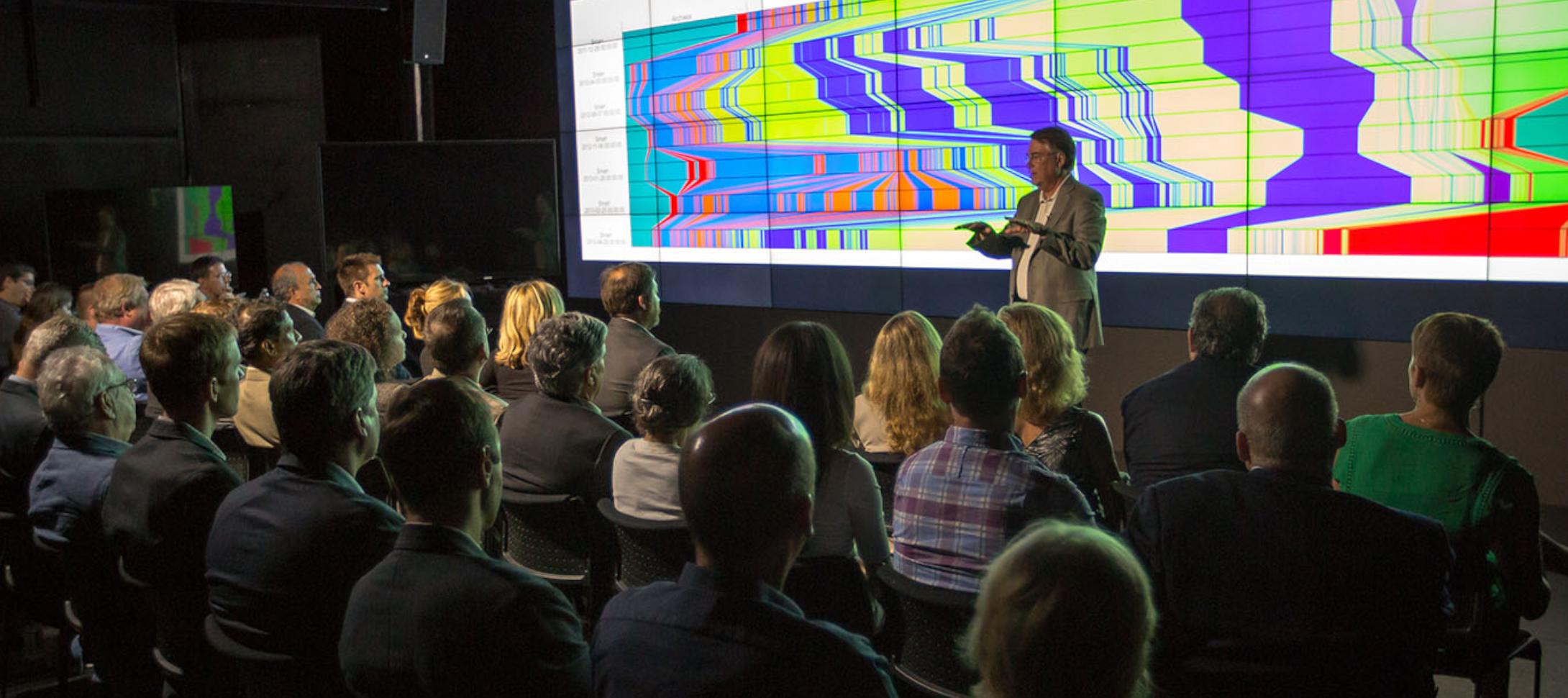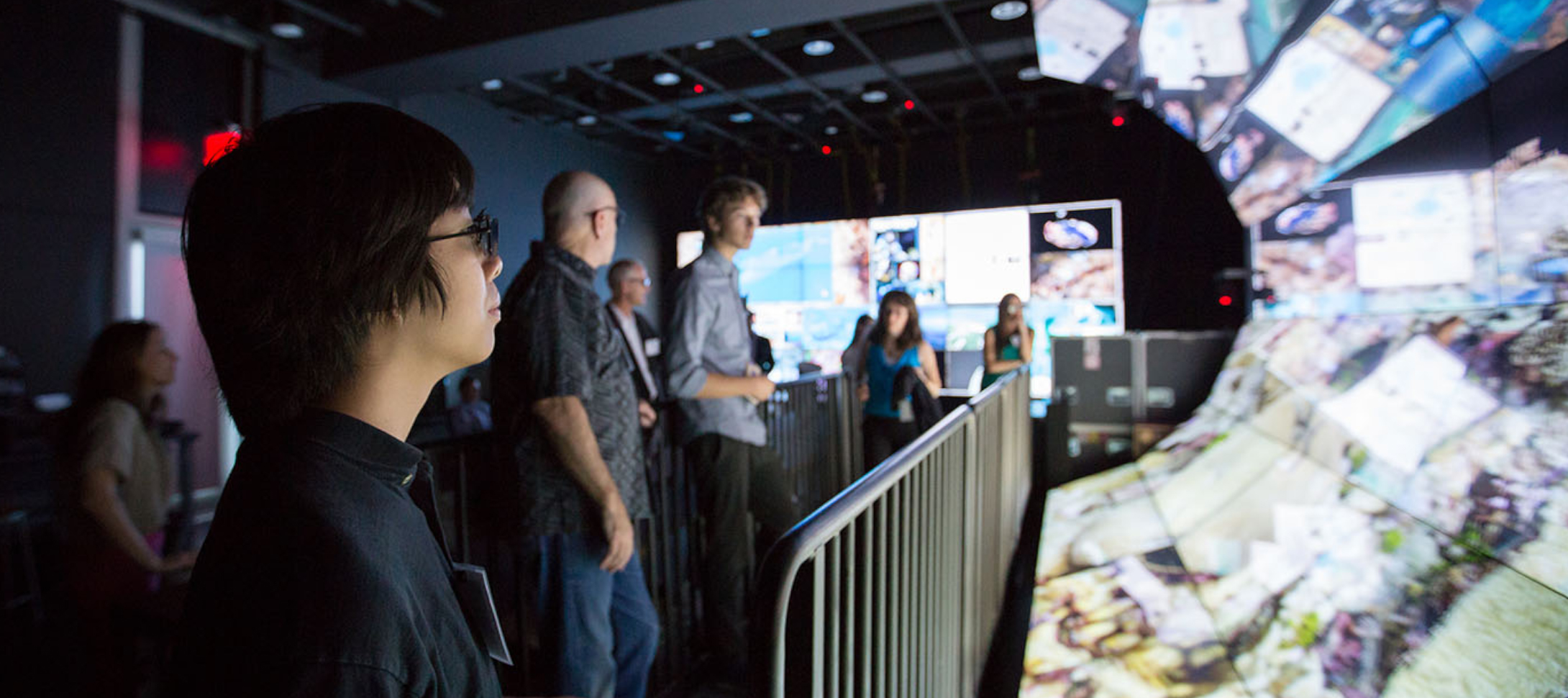
QI’s visualization experts work on research projects that translate data onto screens, typically in advanced ways, such as next-generation resolution, large multi-panel displays, 3D and virtual reality, and mobile devices. Input from high-resolution cameras and various other sensors (LiDAR, structure-from-motion photography, environmental monitors) are also of interest. The team builds advanced PCs, designs displays, uses high-speed networks, programs systems, and works data and models into interactive display sessions for large-scale projects.
Specialists from QI can contribute to any project that needs expert programming for research-level video/photography or development of sensors, including high-resolution video and audio, interactive/immersive computer graphics/virtual reality, simulation, and data visualization. Projects have spanned the fields of health care, automobile computational fluid dynamics (CFD) visualization, geospatial applications with advanced terrain rendering, and hardware, software, and applications of large-scale displays.
QI’s visualization facilities include the SunCAVE, VROOM and WAVE.

SunCAVE
The SunCAVE (Cave Automatic Virtual Environment) is a 360-degree, virtual reality space located on the first floor of Atkinson Hall. It is outfitted with 70 3D stereo ultra-high definition 4K panels (45 screens in front and another 25 behind) driven by 70 Nvidia 1080 GPUs. The 500 megapixel display tilts at both the top and the bottom for an encompassing experience that gives the space a sphere-like appearance. Wearing lightweight passive glasses, visitors can interactively engage with presentation through the use of an ART optical tracking system.
See “From Star to Sun: The Qualcomm Institute’s CAVE Expands” from QI’s News Room.

VROOM
The Big Wall in the Vroom (Virtual Room) is a tiled display environment with four rows of eight displays for a total of 32 narrow-bezel NEC X551UN LCD displays with a 55″ screen diagonal. Each display has full HD resolution (1920 x 1080 pixels), adding up to 66 million pixels on the wall (15,360 x 4,320 pixels). The system supports multi-channel audio, and uses a four-camera optical tracking system from Vicon. All displays are attached in 2×2 patterns to mounting structures, which are either installed in movable containers (OptiPortables) or suspended from above. The Big Wall displays are driven by 16 rendering PCs running CentOS Linux, each with dual Nvidia Geforce 580 graphics cards. Additionally, there are three separate control PCs (head nodes), each supported by a CGLX, CalVR or SAGE software environment.

WAVE
The WAVE displays screens in a cylindrical shape, minimizing ghosting issues, across a horizontal plane. The WAVE consists of 35 3DTVs from LG with a 55″ diagonal and narrow bezels. The displays support passive stereo with circular polarization at full HD resolution. The system displays about 35 million pixels per eye. It is powered by 19 graphics PCs with dual Nvidia GeForce GTX 780 graphics cards. The display makes use of an optical tracking system and input device from AR Tracking.
New applications and partnerships with faculty and other researchers are welcome.
Contact:
Professor Falko Kuester,fkuester@ucsd.edu
Academic Researcher Neil Smith, Ph.D.,
ngsmith@ucsd.edu